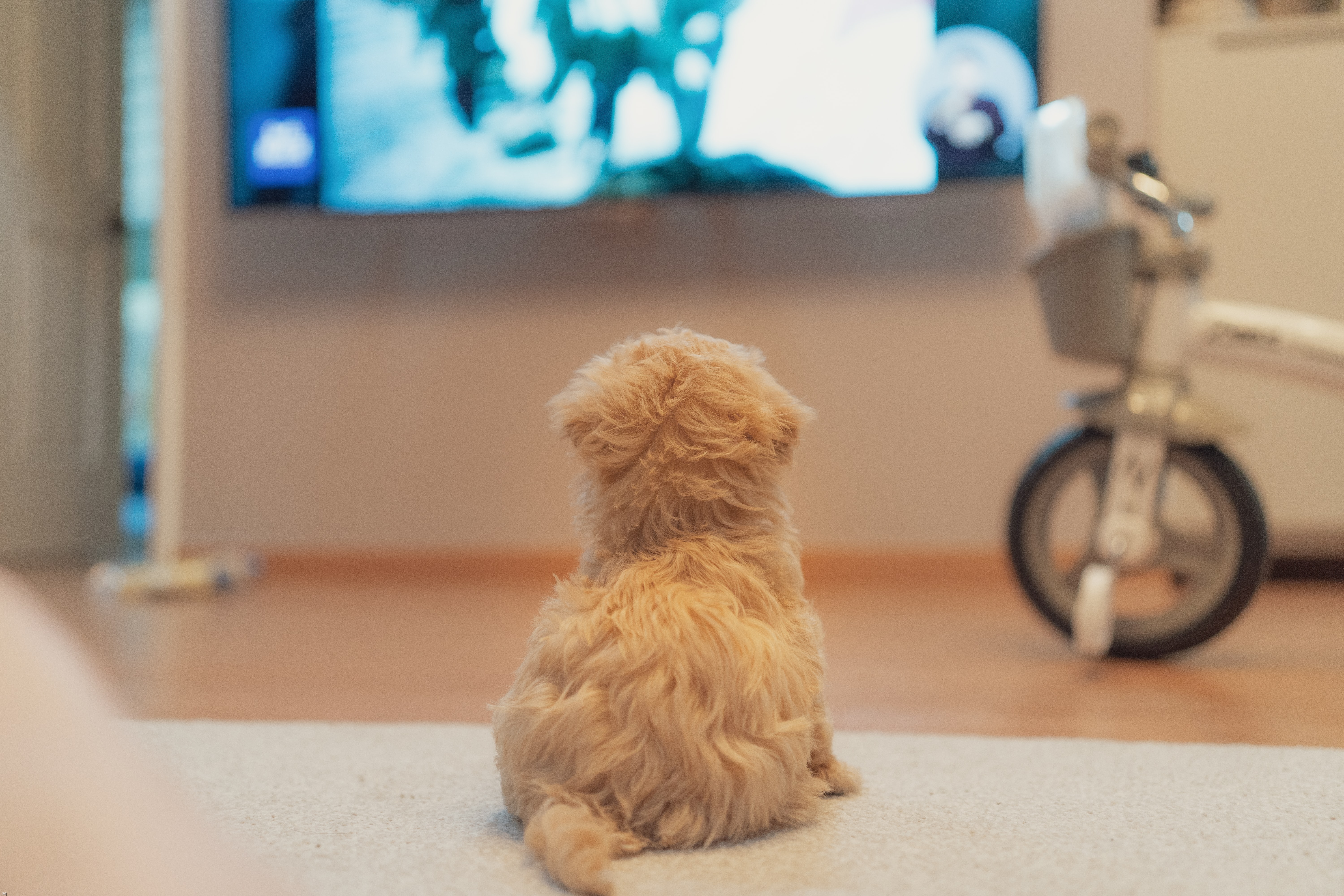During the pandemic, many dogs enjoyed having their owners around more often than normal due to the public health restrictions. But the gradual return to the workplace, along with increasingly busy social calendars, has meant that our dogs are once again spending more time in their own company.
Some of our canine friends – particularly those dogs who have only known life with their owners since the pandemic began – are now experiencing some difficulties adapting to this new lifestyle. So, any tool which can provide stimulation and entertainment can be helpful to minimise their distress and keep them happy and healthy.
Canine separation anxiety is real
Some dogs relish their time alone. It gives them a chance to grab some valuable resting and relaxation time – indeed, dogs can benefit from up to 16 hours of sleep per day.
Sadly, other dogs find being left alone rather more worrying, which can lead to some problematic separation-related behaviours.
Excessive barking or howling, reactivity to external sounds and movement, or even destructive behaviour are commonly reported.
While these are upsetting and sometimes inconvenient for us, often causing expense and occasionally difficult relationships with neighbours, they are also clear signs of emotional distress in our dogs.
How to help dogs relax when home alone
In combination with supportive training, there are a number of recommended ways to make alone time a little easier for our dogs. These include using interactive feeding toys, creating quiet, safe spaces for them, as well as going for a walk with your dog before you go out.
Another common method is to leave on the radio or TV for your dog when they are alone, to minimise disturbances from outside. My own dogs often spend their days listening to classical music, which has been shown to reduce stress in kennelled dogs.
Do dogs relate to TV visuals?
It is widely acknowledged that dogs do not watch TV in the same way as we do – a box-set binge means sofa time with their favourite person rather than catching up on the latest hit drama. But our dogs will probably be aware that we settle down and relax when the TV is on, so that association might be useful in encouraging them to be calm, even when we are not there.
Dogs do not see colour like us either – they see the world in more muted colours but can better detect contrast in dim light.
Movement on screen can be detected by dogs and there are plenty of reports of dogs watching and reacting to moving animals, cars or other objects on TV.
For breeds and types that are stimulated by chasing objects, movement on TV can create interest and perhaps even activity – you might want to be careful about what is around your TV though, just in case your dog’s interest becomes more animated.
A key question is whether dogs can recognise what they see on screen. Dogs can certainly respond to images, and use touch screen devices after training. But it is much more challenging to understand what they actually see.
Dogs do not seem to fully respond to their own reflection in a mirror meaning that we cannot really be sure if they recognise another dog on screen.
Scent is a significant sense for our dogs, especially in recognising each other, and this is clearly missing when a dog watches TV. But, perhaps by combining the sights and sounds of dogs and other animals, our dogs can still be interested and stimulated by a TV in a positive way.
Dogs are sensitive to sound
Dogs have very sensitive hearing. They are adept at orienting themselves to the origin of sounds. The typical head tilt of dogs when spoken to – or when they hear a particular type of sound – helps them to work out where the sound has come from.
Certain noises and frequencies will also either excite or soothe our dogs – my own spaniels react excitedly to the sound of pheasant calls common in TV period dramas.
Having a radio or TV on can give the impression of “normality” and a presence in the home, which can be reassuring. It can also be useful in training and desensitising dogs to the sound of unusual noises that might be frightening, or to disguise and drown out external noises that might disturb them.
Dogs who are physically and mentally stimulated tend to be happier, better behaved and have better relationships with us.
By making their world an interesting and enriching place, with opportunities to learn about the world and make positive associations with sights and sounds, we can help them relax and reduce any anxiety which life may bring.
TV, radio or training tools, in combination with other beneficial lifestyle choices such as exercise, diet, companionship and training, can go a long way towards having a happy and healthy dog. DM/ML
This story was first published in The Conversation.
Jacqueline Boyd is a senior lecturer in Animal Science at Nottingham Trent University.
This article is more than 3 years old
Magazine
Dogs and TV: here’s what we know about how they respond
On the face of it, a recently launched TV channel dedicated to dogs seems, well, barking mad. But our pets often spend long periods of time home alone, and providing some form of enrichment and stimulation can be very beneficial to dogs and their owners alike.




